| Revision as of 18:43, 26 October 2017 edit86.87.212.214 (talk)No edit summary← Previous edit | Revision as of 05:30, 9 November 2017 edit undoTrannyrov (talk | contribs)57 editsm →NameNext edit → | ||
| Line 53: | Line 53: | ||
| The English ''Babylon'' comes from ] ''Babylṓn'' ({{lang|grc|{{linktext|Βαβυλών}}}}), a transliteration of the ] ''{{lang|akk|Bābilim}}''.{{sfn|Sayce|1878|p=182}} | The English ''Babylon'' comes from ] ''Babylṓn'' ({{lang|grc|{{linktext|Βαβυλών}}}}), a transliteration of the ] ''{{lang|akk|Bābilim}}''.{{sfn|Sayce|1878|p=182}} | ||
| The Babylonian name in the early 2nd millennium |
The Babylonian name in the early 2nd millennium BCE had been ''{{lang|akk|Babilli}}'' or ''{{lang|akk|Babilla}}'', long thought to mean “gate of god” (Bab-]).<ref>Dietz Otto Edzard: ''Geschichte Mesopotamiens. Von den Sumerern bis zu Alexander dem Großen'', Beck, München 2004, p. 121.</ref> ] and others considered "Babili" as the translation of a Sumerian or ] name "Ca-dimirra", meaning gate of god,<ref>], "The Origin of Semitic Civilisation, Chiefly Upon Philological Evidence", ''Transactions of the Society of Biblical Archaeology'' Vol. 1, p. ; read 2 April 1872.</ref><ref name=Sayce1878p182>{{cite EB9 |last=Sayce |first=Archibald Henry |authorlink=Archibald Henry Sayce |year=1878b |wstitle=Babylon—Babylonia |volume=III |pages=182–194 |short=x}}</ref> based on the characters KAN<sub>4</sub> DIĜIR.RA<sup>KI</sup> (corresponding to the Sumerian phrase ''kan diĝirak'' "god's gate") or perhaps based on other characters.<ref>], ''The history of Esarhaddon (son of Sennacherib) king of Assyria, B. C. 681–688''; London: Trübner & Co., 1880; pp. –136.</ref> | ||
| The “gate of god” translation is increasingly viewed as a ] to explain an unknown original non-Semitic placename.<ref>Liane Jakob-Rost, Joachim Marzahn: ''Babylon'', ed. Staatliche Museen zu Berlin. Vorderasiatisches Museum, (Kleine Schriften 4), 2. Auflage, Putbus 1990, p. 2</ref> Linguist ] suggested in 1955 that the name ''Babil'' is in reference to an earlier city name,<ref name=Lambert2011 /> and ] claims in her book ''Babylon'' that the rendering ''Gateway of the gods'' is no longer accepted by modern scholars. The name "Babil" could derive from "Bawer" located by ] in Ancient Iran. ] holds that the original Babylon is to be identified with ]. | The “gate of god” translation is increasingly viewed as a ] to explain an unknown original non-Semitic placename.<ref>Liane Jakob-Rost, Joachim Marzahn: ''Babylon'', ed. Staatliche Museen zu Berlin. Vorderasiatisches Museum, (Kleine Schriften 4), 2. Auflage, Putbus 1990, p. 2</ref> Linguist ] suggested in 1955 that the name ''Babil'' is in reference to an earlier city name,<ref name=Lambert2011 /> and ] claims in her book ''Babylon'' that the rendering ''Gateway of the gods'' is no longer accepted by modern scholars. The name "Babil" could derive from "Bawer" located by ] in Ancient Iran. ] holds that the original Babylon is to be identified with ]. | ||
Revision as of 05:30, 9 November 2017
For other uses, see Babylon (disambiguation). "Babilu" redirects here. Not to be confused with Babalu.| بابل | |
 A partial view of the ruins of Babylon from Saddam Hussein's Summer Palace A partial view of the ruins of Babylon from Saddam Hussein's Summer Palace | |
 | |
| Alternative name | Template:Lang-akk, Bābili(m) Sumerian: 𒆍𒀭𒊏𒆠, KÁ.DINGIR.RA Template:Lang-arc, Babel Template:Lang-he, Bavel Template:Lang-grc-gre, Babylṓn Template:Lang-peo, Bābiru Elamite: 𒀸𒁀𒉿𒇷 , Babili Kassite: Karanduniash |
|---|---|
| Location | Hillah, Babil Governorate, Iraq |
| Region | Mesopotamia |
| Coordinates | 32°32′11″N 44°25′15″E / 32.53639°N 44.42083°E / 32.53639; 44.42083 |
| Type | Settlement |
| Part of | Babylon |
| Length | 100 |
| Width | 100 |
| Area | 9 km (3.5 sq mi) |
| History | |
| Founded | c. 2300 BC |
| Abandoned | c. AD 1000 |
| Cultures | Akkadian, Amorite, Kassite, Assyrian, Chaldean, Achaemenid, Hellenistic, Persian, Muslim |
| Associated with | 100,000–200,000 in the first millennium BC |
| Site notes | |
| Archaeologists | Hormuzd Rassam, Robert Koldewey |
| Condition | Ruined |
| Ownership | Public |
| Public access | Yes |
Babylon (𒆍𒀭𒊏𒆠KAN4.DIĜIR.RA Template:Lang-akk; Aramaic: בבל, Babel; Template:Lang-ar, Bābil; Template:Lang-he, Bavel) was a key kingdom in ancient Mesopotamia. The city was built on the Euphrates river and divided in equal parts along its left and right banks, with steep embankments to contain the river's seasonal floods. Babylon was originally a small Akkadian city dating from the period of the Akkadian Empire c. 2300 BC.
The town became an independent city-state with the rise of the First Amorite Babylonian Dynasty in the nineteenth century BC. After the Amorite king Hammurabi created a short-lived empire in the 18th century BC, southern Mesopotamia became known as Babylonia and Babylon eclipsed Nippur as its holy city. The empire waned under Hammurabi's son Samsu-iluna and Babylon spent long periods under Assyrian, Kassite and Elamite domination. After being destroyed and then rebuilt by the Assyrians, Babylon became the capital of the Neo-Babylonian Empire from 609 to 539 BC. The Hanging Gardens of Babylon was one of the Seven Wonders of the Ancient World. After the fall of the Neo-Babylonian Empire, the city came under the rule of the Achaemenid, Seleucid, Parthian, Roman, and Sassanid empires.
It has been estimated that Babylon was the largest city in the world from c. 1770 to 1670 BC, and again between c. 612 and 320 BC. It was perhaps the first city to reach a population above 200,000. Estimates for the maximum extent of its area range from 890 to 900 hectares (2,200 acres). The remains of the city are in present-day Hillah, Babil Governorate, Iraq, about 85 kilometres (53 mi) south of Baghdad, comprising a large tell of broken mud-brick buildings and debris.
The main sources of information about Babylon—excavation of the site itself, references in cuneiform texts found elsewhere in Mesopotamia, references in the Bible, descriptions in classical writing (especially by Herodotus), and second-hand descriptions (citing the work of Ctesias and Berossus)—present an incomplete and sometimes contradictory picture of the ancient city even at its peak in the sixth century BC.
Name
The English Babylon comes from Greek Babylṓn (Βαβυλών), a transliteration of the Akkadian Bābilim.
The Babylonian name in the early 2nd millennium BCE had been Babilli or Babilla, long thought to mean “gate of god” (Bab-Ili). Archibald Sayce and others considered "Babili" as the translation of a Sumerian or persian name "Ca-dimirra", meaning gate of god, based on the characters KAN4 DIĜIR.RA (corresponding to the Sumerian phrase kan diĝirak "god's gate") or perhaps based on other characters.
The “gate of god” translation is increasingly viewed as a folk etymology to explain an unknown original non-Semitic placename. Linguist I.J. Gelb suggested in 1955 that the name Babil is in reference to an earlier city name, and Joan Oates claims in her book Babylon that the rendering Gateway of the gods is no longer accepted by modern scholars. The name "Babil" could derive from "Bawer" located by Ernst Herzfeld in Ancient Iran. David Rohl holds that the original Babylon is to be identified with Eridu.
In the Bible, the name appears as Babel (Template:Lang-he, Bavel, Tib. בָּבֶל, Bāvel; Template:Lang-syc, Bāwēl), interpreted in the Hebrew Scriptures' Book of Genesis to mean "confusion", from the verb bilbél (בלבל, "to confuse"). The modern English verb, to "babble", or to speak meaningless words, is popularly thought to derive from this name, but there is no direct connection.
Ancient records in some situations use Babylon as a name for other cities, including cities like Borsippa within Babylon's sphere of influence, and Nineveh for a short period after the Assyrian sack of Babylon.
Geography

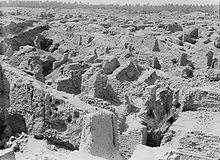
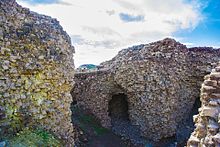
The remains of the city are in present-day Hillah, Babil Governorate, Iraq, about 85 kilometers (53 mi) south of Baghdad, comprising a large tell of broken mud-brick buildings and debris. The site at Babylon consists of a number of mounds covering an area of about 2 by 1 kilometer (1.24 mi × 0.62 mi), oriented north to south, along the Euphrates to the west. Originally, the river roughly bisected the city, but the course of the river has since shifted so that most of the remains of the former western part of the city are now inundated. Some portions of the city wall to the west of the river also remain.
Only a small portion of the ancient city (3% of the area within the inner walls; 1.5% of the area within the outer walls; 0.05% at the depth of Middle and Old Babylon) has been excavated. Known remains include:
- Kasr—also called Palace or Castle, it is the location of the Neo-Babylonian ziggurat Etemenanki and lies in the center of the site.
- Amran Ibn Ali—the highest of the mounds at 25 meters, to the south. It is the site of Esagila, a temple of Marduk which also contained shrines to Ea and Nabu.
- Homera—a reddish colored mound on the west side. Most of the Hellenistic remains are here.
- Babil—a mound about 22 meters high at the northern end of the site. Its bricks have been subject to looting since ancient times. It held a palace built by Nebuchadnezzar.
Archaeologists have recovered few artifacts predating the Neo-Babylonian period. The water table in the region has risen greatly over the centuries and artifacts from the time before the Neo-Babylonian Empire are unavailable to current standard archaeological methods. Additionally, the Neo-Babylonians conducted significant rebuilding projects in the city, which destroyed or obscured much of the earlier record. Babylon was pillaged numerous times after revolting against foreign rule, most notably by the Hittites and Elamites in the 2nd millennium, then by the Neo-Assyrian Empire and the Achaemenid Empire in the 1st millennium. Much of the western half of the city is now beneath the river, and other parts of the site have been mined for commercial building materials.
Only the Koldewey expedition recovered artifacts from the Old Babylonian period. These included 967 clay tablets, stored in private houses, with Sumerian literature and lexical documents.
Nearby ancient settlements are Kish, Borsippa, Dilbat, and Kutha. Marad and Sippar were 60 km in either direction along the Euphrates.
Sources
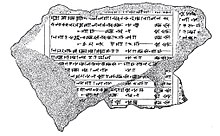
Historical knowledge of early Babylon must be pieced together from epigraphic remains found elsewhere, such as at Uruk, Nippur, and Haradum.
Information on the Neo-Babylonian city is available from archaeological excavations and from classical sources. Babylon was described, perhaps even visited, by a number of classical historians including Ctesias, Herodotus, Quintus Curtius Rufus, Strabo, and Cleitarchus. These reports are of variable accuracy and some of the content was politically motivated, but these still provide useful information.
Early references
References to the city of Babylon can be found in Akkadian and Sumerian literature from the late third millennium BC. One of the earliest is a tablet describing the Akkadian king Šar-kali-šarri laying the foundations in Babylon of new temples for Annūnı̄tum and Ilaba. Babylon also appears in the administrative records of the Third Dynasty of Ur, which collected in-kind tax payments and appointed an ensi as local governor.
The so-called Weidner Chronicle (also known as ABC 19) states that Sargon of Akkad (c. 23d century BC in the short chronology had built Babylon "in front of Akkad" (ABC 19:51). A later chronicle states that Sargon "dug up the dirt of the pit of Babylon, and made a counterpart of Babylon next to Akkad". (ABC 20:18–19). Van de Mieroop has suggested that those sources may refer to the much later Assyrian king Sargon II of the Neo-Assyrian Empire rather than Sargon of Akkad.
The Book of Genesis, chapter 10, claims that king Nimrod founded Babel, Uruk, and Akkad.
Classical dating
Ctesias, quoted by Diodorus Siculus and in George Syncellus's Chronographia, claimed to have access to manuscripts from Babylonian archives, which date the founding of Babylon to 2286 BC, under the reign of its first king, Belus. A similar figure is found in the writings of Berossus, who according to Pliny, stated that astronomical observations commenced at Babylon 490 years before the Greek era of Phoroneus, indicating 2243 BC. Stephanus of Byzantium wrote that Babylon was built 1002 years before the date given by Hellanicus of Lesbos for the siege of Troy (1229 BC), which would date Babylon's foundation to 2231 BC. All of these dates place Babylon's foundation in the 23rd century BC; however, cuneiform records have not been found to correspond with these classical (post-cuneiform) accounts.
History
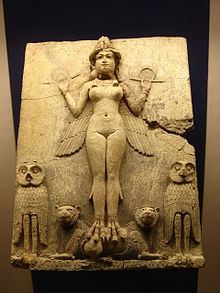
By around the 19th century BC, much of southern Mesopotamia was occupied by Amorites, nomadic tribes from the northern Levant who were Northwest Semitic speakers, unlike the native Akkadians of southern Mesopotamia and Assyria, who spoke East Semitic. The Amorites at first did not practice agriculture like more advanced Mesopotamians, preferring a semi-nomadic lifestyle, herding sheep. Over time, Amorite grain merchants rose to prominence and established their own independent dynasties in several south Mesopotamian city-states, most notably Isin, Larsa, Eshnunna, Lagash, and later, founding Babylon as a state.
Old Babylonian period


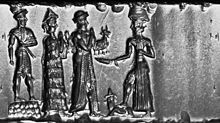
According to a Babylonian date list, Amorite rule in Babylon began (c. the 19th or 18th century BC) with a chieftain named Sumu-abum, who declared independence from the neighboring city-state of Kazallu. Sumu-la-El, whose dates may be concurrent with those of Sumu-abum, is usually given as the progenitor of the First Babylonian Dynasty. Both are credited with building the walls of Babylon. In any case, the records describe Sumu-la-El’s military successes establishing a regional sphere of influence for Babylon.
Babylon was initially a minor city-state, and controlled little surrounding territory; its first four Amorite rulers did not assume the title of king. The older and more powerful states of Assyria, Elam, Isin and Larsa overshadowed Babylon until it became the capital of Hammurabi's short lived empire about a century later. Hammurabi (r. 1792–1750 BC) is famous for codifying the laws of Babylonia into the Code of Hammurabi. He conquered all of the cities and city states of southern Mesopotamia, including Isin, Larsa, Ur, Uruk, Nippur, Lagash, Eridu, Kish, Adab, Eshnunna, Akshak, Akkad, Shuruppak, Bad-tibira, Sippar and Girsu, coalescing them into one kingdom, ruled from Babylon. Hammurabi also invaded and conquered Elam to the east, and the kingdoms of Mari and Ebla to the north west. After a protracted struggle with the powerful Mesopotamian king Ishme-Dagan of Assyria, he forced his successor to pay tribute late in his reign, spreading Babylonian power to Assyria's Hattian and Hurrian colonies in Asia Minor.
After the reign of Hammurabi, the whole of southern Mesopotamia came to be known as Babylonia, whereas the north had coalesced centuries before into Assyria. From this time, Babylon supplanted Nippur and Eridu as the major religious center of Mesopotamia. Hammurabi's empire destabilized after his death. Assyrians defeated and drove out the Babylonians and Amorites. The far south of Mesopotamia broke away, forming the Sealand Dynasty, and the Elamites appropriated territory in eastern Mesopotamia. The Amorite dynasty remained in power in Babylon, which again became a small city state.
Texts from Old Babylon often include references to Shamash, the sun-god of Sippar, treated as a supreme deity, and Marduk, considered as his son. Marduk was later elevated to a higher status and Shamash lowered, perhaps reflecting Babylon’s rising political power
Middle Babylon
In 1595 BC the city was overthrown by the Hittite Empire from Asia Minor. Thereafter, Kassites from the Zagros Mountains of north western Ancient Iran captured Babylon, ushering in a dynasty that lasted for 435 years, until 1160 BC. The city was renamed Karanduniash during this period. Kassite Babylon eventually became subject to the Middle Assyrian Empire (1365–1053 BC) to the north, and Elam to the east, with both powers vying for control of the city. The Assyrian king Tukulti-Ninurta I took the throne of Babylon in 1235 BC.
By 1155 BC, after continued attacks and annexing of territory by the Assyrians and Elamites, the Kassites were deposed in Babylon. An Akkadian south Mesopotamian dynasty then ruled for the first time. However, Babylon remained weak and subject to domination by Assyria. Its ineffectual native kings were unable to prevent new waves of foreign West Semitic settlers from the deserts of the Levant, including the Arameans and Suteans in the 11th century BC, and finally the Chaldeans in the 9th century BC, entering and appropriating areas of Babylonia for themselves. The Arameans briefly ruled in Babylon during the late 11th century BC.
Assyrian period

During the rule of the Neo-Assyrian Empire (911–609 BC), Babylonia was under constant Assyrian domination or direct control. During the reign of Sennacherib of Assyria, Babylonia was in a constant state of revolt, led by a chieftain named Merodach-Baladan, in alliance with the Elamites, and suppressed only by the complete destruction of the city of Babylon. In 689 BC, its walls, temples and palaces were razed, and the rubble was thrown into the Arakhtu, the sea bordering the earlier Babylon on the south. Destruction of the religious center shocked many, and the subsequent murder of Sennacherib by two of his own sons while praying to the god Nisroch was considered an act of atonement. Consequently, his successor Esarhaddon hastened to rebuild the old city and make it his residence during part of the year. After his death, Babylonia was governed by his elder son, the Assyrian prince Shamash-shum-ukin, who eventually started a civil war in 652 BC against his own brother, Ashurbanipal, who ruled in Nineveh. Shamash-shum-ukin enlisted the help of other peoples subject to Assyria, including Elam, Persia, Chaldeans and Suteans of southern Mesopotamia, and the Canaanites and Arabs dwelling in the deserts south of Mesopotamia.
Once again, Babylon was besieged by the Assyrians, starved into surrender and its allies were defeated. Ashurbanipal celebrated a "service of reconciliation", but did not venture to "take the hands" of Bel. An Assyrian governor named Kandalanu was appointed as ruler of the city. Ashurbanipal did collect texts from Babylon for inclusion in his extensive library at Ninevah.
After the death of Ashurbanipal, the Assyrian empire destabilized due to a series of internal civil wars throughout the reigns of Assyrian kings Ashur-etil-ilani, Sin-shumu-lishir and Sinsharishkun. Eventually Babylon, like many other parts of the near east, took advantage of the anarchy within Assyria to free itself from Assyrian rule. In the subsequent overthrow of the Assyrian Empire by an alliance of peoples, the Babylonians saw another example of divine vengeance.
Neo-Babylonian Empire
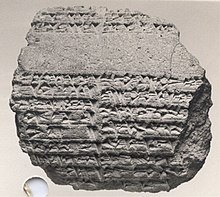
| This section needs additional citations for verification. Please help improve this article by adding citations to reliable sources in this section. Unsourced material may be challenged and removed. (June 2008) (Learn how and when to remove this message) |

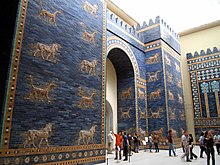
Under Nabopolassar, a previously unknown Chaldean chieftain, Babylon escaped Assyrian rule, and in an alliance with Cyaxares, king of the Medes and Persians together with the Scythians and Cimmerians, finally destroyed the Assyrian Empire between 612 BC and 605 BC. Babylon thus became the capital of the Neo-Babylonian (sometimes and possibly erroneously called Chaldean) Empire.
With the recovery of Babylonian independence, a new era of architectural activity ensued, particularly during the reign of his son Nebuchadnezzar II (604–561 BC). Nebuchadnezzar ordered the complete reconstruction of the imperial grounds, including the Etemenanki ziggurat, and the construction of the Ishtar Gate—the most prominent of eight gates around Babylon. A reconstruction of the Ishtar Gate is located in the Pergamon Museum in Berlin.
Nebuchadnezzar is also credited with the construction of the Hanging Gardens of Babylon—one of the seven wonders of the ancient world—said to have been built for his homesick wife Amyitis. Whether the gardens actually existed is a matter of dispute. German archaeologist Robert Koldewey speculated that he had discovered its foundations, but many historians disagree about the location. Stephanie Dalley has argued that the hanging gardens were actually located in the Assyrian capital, Nineveh.
Nebuchandnezzar is also notoriously associated with the Babylonian exile of the Jews, the result of an imperial technique of pacification, used also by the Assyrians, in which ethnic groups in conquered areas were deported en masse to the capitol.
Chaldean rule of Babylon did not last long; it is not clear whether Neriglissar and Labashi-Marduk were Chaldeans or native Babylonians, and the last ruler Nabonidus (556–539 BC) and his co-regent son Belshazzar were Assyrians from Harran.
Persian conquest
In 539 BC, the Neo-Babylonian Empire fell to Cyrus the Great, king of Persia, with a military engagement known as the Battle of Opis. Babylon's walls were considered impenetrable. The only way into the city was through one of its many gates or through the Euphrates River. Metal grates were installed underwater, allowing the river to flow through the city walls while preventing intrusion. The Persians devised a plan to enter the city via the river. During a Babylonian national feast, Cyrus' troops diverted the Euphrates River upstream, allowing Cyrus' soldiers to enter the city through the lowered water. The Persian army conquered the outlying areas of the city while the majority of Babylonians at the city center were unaware of the breach. The account was elaborated upon by Herodotus and is also mentioned in parts of the Hebrew Bible.
(Herodotus also described a moat, an enormously tall and broad wall cemented with bitumen and with buildings on top, and a hundred gates to the city. He also writes that the Babylonians wear turbans and perfume and bury their dead in honey, that they practice ritual prostitution, and that three tribes among them eat nothing but fish. The hundred gates can be considered a reference to Homer, and following the pronouncement of Archibald Henry Sayce in 1883, Herodotus’s account of Babylon has largely been considered to represent Greek folklore rather than an authentic voyage to Babylon. Dalley and others have recently suggested taking Herodotus’s account seriously again.)
According to 2 Chronicles 36 of the Hebrew Bible, Cyrus later issued a decree permitting captive people, including the Jews, to return to their own lands. Text found on the Cyrus Cylinder has traditionally been seen by biblical scholars as corroborative evidence of this policy, although the interpretation is disputed because the text only identifies Mesopotamian sanctuaries but makes no mention of Jews, Jerusalem, or Judea.
Under Cyrus and the subsequent Persian king Darius I, Babylon became the capital city of the 9th Satrapy (Babylonia in the south and Athura in the north), as well as a center of learning and scientific advancement. In Achaemenid Persia, the ancient Babylonian arts of astronomy and mathematics were revitalized, and Babylonian scholars completed maps of constellations. The city became the administrative capital of the Persian Empire and remained prominent for over two centuries. Many important archaeological discoveries have been made that can provide a better understanding of that era.
The early Persian kings had attempted to maintain the religious ceremonies of Marduk, but by the reign of Darius III, over-taxation and the strain of numerous wars led to a deterioration of Babylon's main shrines and canals, and the destabilization of the surrounding region. There were numerous attempts at rebellion and in 522 BC (Nebuchadnezzar III), 521 BC (Nebuchadnezzar IV) and 482 BC (Bel-shimani and Shamash-eriba) native Babylonian kings briefly regained independence. However these revolts were quickly repressed and Babylon remained under Persian rule for two centuries, until Alexander the Great's entry in 331 BC.
Hellenistic period

In October of 331 BC, Darius III, the last Achaemenid king of the Persian Empire, was defeated by the forces of the Ancient Macedonian Greek ruler Alexander the Great at the Battle of Gaugamela. A native account of this invasion notes a ruling by Alexander not to enter the homes of its inhabitants.
Under Alexander, Babylon again flourished as a center of learning and commerce. However, following Alexander's death in 323 BC in the palace of Nebuchadnezzar, his empire was divided amongst his generals, the Diadochi, and decades of fighting soon began. The constant turmoil virtually emptied the city of Babylon. A tablet dated 275 BC states that the inhabitants of Babylon were transported to Seleucia, where a palace and a temple (Esagila) were built. With this deportation, Babylon became insignificant as a city, although more than a century later, sacrifices were still performed in its old sanctuary.
Renewed Persian rule
Main article: Babylonia § Persian_BabyloniaUnder the Parthian and Sassanid Empires, Babylon (like Assyria) became a province of these Persian Empires for nine centuries, until after AD 650. It maintained its own culture and people, who spoke varieties of Aramaic, and who continued to refer to their homeland as Babylon. Examples of their culture are found in the Babylonian Talmud, the Gnostic Mandaean religion, Eastern Rite Christianity and the religion of the prophet Mani. Christianity was introduced to Mesopotamia in the 1st and 2nd centuries AD, and Babylon was the seat of a Bishop of the Church of the East until well after the Arab/Islamic conquest.
Muslim conquest
Main article: Muslim conquest of PersiaIn the mid-7th century, Mesopotamia was invaded and settled by the expanding Muslim Empire, and a period of Islamization followed. Babylon was dissolved as a province and Aramaic and Church of the East Christianity eventually became marginalized. Ibn Hauqal mentions a small village called Babel in the tenth century; subsequent travelers describe only ruins.
Babylon is mentioned in medieval Arabic writings as a source of bricks, said to have been used in cities from Baghdad to Basra.
European travelers in many cases could not discover the city's location, or mistook Fallujah for it. Twelfth-century traveler Benjamin of Tudela mentions Babylon but it’s not clear if he really went there. Others referred to Baghdad as Babylon or New Babylon and described various structures encountered in the region as the Tower of Babel. Pietro della Valle found the ancient site in the seventeenth century and noted the existence of both baked and dried mudbricks cemented with bitumen.
Modern era
Claudius J. Rich, Memoir on the Ruins of Babylon (1815), pp. 1–2.From the accounts of modern travellers, I had expected to have found on the site of Babylon more, and less, than I actually did. Less, because I could have formed no conception of the prodigious extent of the whole ruins, or of the size, solidity, and perfect state, of some of the parts of them; and more, because I thought that I should have distinguished some traces, however imperfect, of many of the principle structures of Babylon. I imagined, I should have said: “Here were the walls, and such must have been the extent of the area. There stood the palace, and this most assuredly was the tower of Belus.” – I was completely deceived: instead of a few insulated mounds, I found the whole face of the country covered with vestiges of building, in some places consisting of brick walls surprisingly fresh, in others merely of a vast succession of mounds of rubbish of such indeterminate figures, variety and extent, as to involve the person who should have formed any theory in inextricable confusion.
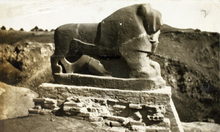
The eighteenth century saw an increasing flow of travelers to Babylon, including Carsten Niebuhr and Pierre-Joseph de Beauchamp, as well as measurements of its latitude. Beauchamp’s memoir, published in English translation in 1792, provoked the British East India Company to direct its agents in Baghdad and Basra to acquire Mesopotamian relics for shipment to London.
Excavation and research
Claudius Rich, working for the East India Company in Baghdad, excavated Babylon in 1811–12 and again in 1817. Robert Mignan excavated at the site briefly in 1827. William Loftus visited there in 1849.
Austen Henry Layard made some soundings during a brief visit in 1850 before abandoning the site. Fulgence Fresnel and Julius Oppert heavily excavated Babylon from 1852 to 1854. However, many of the fruits of their work was lost when a raft containing over forty crates of artifacts sank into the Tigris river.
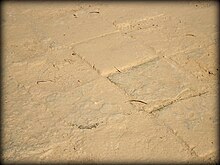
Sir Henry Rawlinson, 1st Baronet and George Smith worked there briefly in 1854. The next excavation was conducted by Hormuzd Rassam on behalf of the British Museum. Work began in 1879, continuing until 1882, and was prompted by widespread looting of the site. Using industrial scale digging in search of artifacts, Rassam recovered a large quantity of cuneiform tablets and other finds. The zealous excavation methods, common at the time, caused significant damage to the archaeological context. Many tablets had appeared on the market in 1876 before Rassam's excavation began.
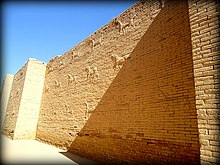
A team from the German Oriental Society led by Robert Koldewey conducted the first scientific archaeological excavations at Babylon. The work was conducted daily from 1899 until 1917. Primary efforts of the dig involved the temple of Marduk and the processional way leading up to it, as well as the city wall. Artifacts including pieces of the Ishtar Gate and hundreds of recovered tablets were sent back to Germany, where Koldewey's colleague Walter Andrae reconstructed them into displays at Vorderasiatisches Museum Berlin., The German archaeologists fled before oncoming British troops in 1917 and again many objects went missing in the following years.
Further work by the German Archaeological Institute was conducted by Heinrich J. Lenzen in 1956 and Hansjörg Schmid in 1962. Lenzen's work dealt primarily with the Hellenistic theatre, and Schmid focused on the temple ziggurat Etemenanki.
The site was excavated in 1974 on behalf of the Turin Centre for Archaeological Research and Excavations in the Middle East and Asia and the Iraqi-Italian Institute of Archaeological Sciences. The focus was on clearing up issues raised by re-examination of the old German data. Additional work in 1987–1989 concentrated on the area surrounding the Ishara and Ninurta temples in the Shu-Anna city-quarter of Babylon.
During the restoration efforts in Babylon, the Iraqi State Organization for Antiquities and Heritage excavation and clearing, but wider publication of these archaeological activities has been limited. Indeed, most of the known tablets from all modern excavation remain unpublished.
Iraq government
The site of Babylon has been a cultural asset to Iraq since the creation of the modern Iraqi government in 1920. Babylonian images periodically appear on Iraqi postcards and stamps. In the 1960s a replica of the Ishtar gate and a reconstruction of Ninmakh temple were built on site.
On 14 February 1978, the Baathist government of Iraq under Saddam Hussein began the "Archaeological Restoration of Babylon Project": reconstructing features of the ancient city atop its ruins. These features included the Southern Palace of Nebuchandnezzar, with 250 rooms, five courtyards, and a 30-meter entrance arch. The project also reinforced the Processional Way, the Lion of Babylon, and an amphitheater constructed in the city's Hellenistic era. In 1982 the government minted a set of seven coins displaying iconic features of Babylon. A Babylon International Festival was held in September 1987, and annually thereafter until 2002 (excepting 1990 and 1991), to showcase this work. Proposed reconstruction of the Hanging Gardens and the great ziggurat never took place.
Hussein installed a portrait of himself and Nebuchadnezzar at the entrance to the ruins and inscribed his name on many of the bricks, in imitation of Nebuchadnezzar. One frequent inscription reads: "This was built by Saddam Hussein, son of Nebuchadnezzar, to glorify Iraq". These bricks became sought after as collectors' items after Hussein's downfall. Similar projects were conducted at Nineveh, Nimrud, Assur and Hatra, to demonstrate the magnificence of Arab achievement.
When the 1991 Gulf War ended, Hussein wanted to build a modern palace called Saddam Hill over some of the old ruins, in the pyramidal style of a ziggurat. In 2003, he intended the construction of a cable car line over Babylon, but plans were halted by the 2003 invasion of Iraq.
US and Polish occupation
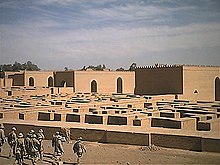
Following the 2003 invasion of Iraq, the area around Babylon came under the control of US troops, before being handed over to Polish forces in September 2003. US forces under the command of General James T. Conway of the I Marine Expeditionary Force were criticized for building the military base "Camp Alpha", with a helipad and other facilities on ancient Babylonian ruins during the Iraq War. US forces have occupied the site for some time and have caused irreparable damage to the archaeological record. In a report of the British Museum's Near East department, Dr. John Curtis described how parts of the archaeological site were levelled to create a landing area for helicopters, and parking lots for heavy vehicles. Curtis wrote that the occupation forces:
caused substantial damage to the Ishtar Gate, one of the most famous monuments from antiquity US military vehicles crushed 2,600-year-old brick pavements, archaeological fragments were scattered across the site, more than 12 trenches were driven into ancient deposits and military earth-moving projects contaminated the site for future generations of scientists.
A US Military spokesman claimed that engineering operations were discussed with the "head of the Babylon museum". The head of the Iraqi State Board for Heritage and Antiquities, Donny George, said that the "mess will take decades to sort out" and criticised Polish troops for causing "terrible damage" to the site. Poland resolved in 2004 to place the city under Iraq control, and commissioned a report titled Report Concerning the Condition of the Preservation of the Babylon Archaeological Site, which it presented at a meeting on 11–13 December 2004. In 2005 the site was handed over to the Iraqi Ministry of Culture.
In April 2006, Colonel John Coleman, former Chief of Staff for the 1st Marine Expeditionary Force, offered to issue an apology for the damage done by military personnel under his command. However, he also claimed that the US presence had deterred far greater damage by other looters. An article published in April 2006 stated that UN officials and Iraqi leaders have plans to restore Babylon, making it into a cultural center.
Two museums and a library, containing replicas of artifacts and local maps and reports, were raided and destroyed.
Present day
In May 2009, the provincial government of Babil reopened the site to tourists, but not many have come. An oil pipeline runs through an outer wall of the city.

Cultural importance
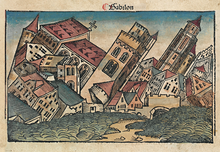
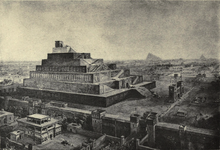
Before modern archaeological excavations in Mesopotamia, the appearance of Babylon was largely a mystery, and typically envisioned by Western artists as a hybrid between ancient Egyptian, classical Greek, and contemporary Ottoman culture.
Due to Babylon's historical significance as well as references to it in the Bible, the word "Babylon" in various languages has acquired a generic meaning of a large, bustling diverse city. Examples include:
- Babylon is used in reggae music as a concept in the Rastafari belief system, denoting the materialistic capitalist world.
- Freemasonry, which has its own versions of biblical legends, classically considered Babylon as its birthplace and a haven for science and knowledge.
- Babylon 5—a science fiction series about a multi-racial futuristic space station.
- Babylon A.D. takes place in New York City, decades in the future.
- Babilonas (Lithuanian name for "Babylon")—a real estate development in Lithuania.
Biblical narrative
In Genesis 10:10, Babel (Babylon) is described as founded by Nimrod along with Uruk, Akkad and perhaps Calneh—all of them in Shinar ("Calneh" is now sometimes translated not as a proper name but as the phrase "all of them"). Another story is given in Genesis 11, which describes a united human race, speaking one language, migrating to Shinar to establish a city and tower—the Tower of Babel. God destroys the tower and the city, dispersing humanity across the earth and requiring them to speak mutually unintelligible languages.
Babylon appears throughout the Hebrew Bible, including in descriptions of the destruction of Jerusalem and of the Babylonian captivity, and in several prophecies. Consequently, in Jewish and Christian tradition, Babylon symbolizes an oppressor against which righteous believers must struggle. Prophecies sometimes symbolically link the kings of Babylon with Lucifer. Nebuchadnezzar, sometimes conflated with Nabonidus, appears as the foremost ruler in this narrative.
The Revelation of St. John in the Christian Bible refers to Babylon many centuries after it ceased to be a major political center. The city is personified by the “Whore of Babylon”, riding on a scarlet beast with seven heads and ten horns, and drunk on the blood of the righteous. Some scholars of apocalyptic literature believe this New Testament “Babylon” to be a dysphemism for the Roman Empire.
See also
- Cities of the ancient Near East
- Jehoiachin's Rations Tablets
- List of Kings of Babylon
- Tomb of Daniel
Notes
- The Amorites were not native to Mesopotamia, but were semi-nomadic Canaanite Northwest Semitic invaders from the northern Levant. They (together with the Elamites to the east) had originally been prevented from taking control of the Akkadian states of southern Mesopotamia by the intervention of powerful Assyrian kings of the Old Assyrian Empire during the 21st and 20th centuries BC, intervening from northern Mesopotamia. However, when the Assyrians turned their attention to expanding their colonies in Asia Minor, the Amorites eventually began to supplant native rulers across the region.
- Please see Chronology of the ancient Near East for more discussion on dating events in the 2nd millennium BC, including the Sack of Babylon.
References
- ^ The Cambridge Ancient History: Prolegomena & Prehistory: Vol. 1, Part 1. Accessed 15 Dec 2010.]
- Tertius Chandler. Four Thousand Years of Urban Growth: An Historical Census (1987), St. David's University Press ("etext.org". Archived from the original on 2008-02-11. Retrieved 2010-04-18.
{{cite web}}: Unknown parameter|deadurl=ignored (|url-status=suggested) (help)). ISBN 0-88946-207-0. See Historical urban community sizes. - Mieroop, Marc van de (1997). The Ancient Mesopotamian City. Oxford: Oxford University Press. p. 95. ISBN 9780191588457.
- Boiy, T. (2004). Late Achaemenid and Hellenistic Babylon. Orientalia Lovaniensia Analecta. Vol. 136. Leuven: Peeters Publishers. p. 233. ISBN 9789042914490.
- Seymour (2006), pp. 140–142.
- Sayce 1878, p. 182.
- Dietz Otto Edzard: Geschichte Mesopotamiens. Von den Sumerern bis zu Alexander dem Großen, Beck, München 2004, p. 121.
- Archibald Henry Sayce, "The Origin of Semitic Civilisation, Chiefly Upon Philological Evidence", Transactions of the Society of Biblical Archaeology Vol. 1, p. 298; read 2 April 1872.
- ^ Sayce, Archibald Henry (1878b). "Babylon—Babylonia" . Encyclopædia Britannica. Vol. III (9th ed.). pp. 182–194.
- Ernest A. Budge, The history of Esarhaddon (son of Sennacherib) king of Assyria, B. C. 681–688; London: Trübner & Co., 1880; pp. 135–136.
- Liane Jakob-Rost, Joachim Marzahn: Babylon, ed. Staatliche Museen zu Berlin. Vorderasiatisches Museum, (Kleine Schriften 4), 2. Auflage, Putbus 1990, p. 2
- ^ Wilfred G. Lambert, “Babylon: Origins”; in Cancik-Kirschbaum et al. (2011), pp. 71–76.
- Gen. 11:9.
- Magnus Magnusson, BC: The Archaeology of the Bible Lands. BBC Publications 1977, pages 198–199.
- "Online Etymology Dictionary – babble".
- Stephanie Dalley, "Nineveh, Babylon and the Hanging Gardens: Cuneiform and Classical Sources Reconciled"; Iraq 56, 1994.
- ^ Stephanie Dalley, Babylon as a Name for other Cities Including Nineveh, in Proceedings of the 51st Rencontre Assyriologique Internationale, Oriental Institute SAOC 62, pp. 25–33, 2005
- ^ Olof Pedersén, "Excavated and Unexcavated Libraries in Babylon", in Cancik-Kirschbaum et al. (2011), pp. 47–67.
- ^ MacGinnis, John (1986). "Herodotus' Description of Babylon". Bulletin of the Institute of Classical Studies. 33: 67–86. Retrieved 18 March 2015.
- Vedeler (2006), pp. 7–8.
- Records of the Past, Archibald Sayce, 2nd series, Vol. 1, 1888, p. 11.
- N.H. vii. 57
- The Seven Great Monarchies of the Ancient Eastern World, George Rawlinson, Vol. 4, p. 526-527.
- Al-Gailani Werr, L., 1988. Studies in the chronology and regional style of Old Babylonian Cylinder Seals. Bibliotheca Mesopotamica, Volume 23.
- Vedeler (2006), pp. 8–15. “However, this later tradition is almost certainly a simplification or even a reworking of the actual events surrounding Sumu-abum, who was never regarded as an actual ancestor to the other kings of the Babylon I dynasty (Edzard 1957:122); in reality the relationship of Sumu-abum to Babylon was much more complex. It was long been noted that many of Sumu-abum’s year names are identical or virtually identical to the year names of Sumu-la-el, whom we know for certain was king of Babylon. Goddeeris (2002:319-320) sums these parallels up as follows: Sa 1 and 2 / Sl 5 and 6: building the wall of Babylon. Sa 9 / Sl ‘b’: building the wall of Dilbat. Sa 13/14 / Sl 20/21: the destruction and seizure of Kazallu.”
- Albert Houtum-Schindler, "Babylon," Encyclopædia Britannica, 11th ed.
- "170. MMA 86.11.284" in Ira Spar & Michael Jursa, Cuneiform Texts in the Metropolitan Museum of Art: IV. The Ebabbar Temple Archive and Other Texts from the Fourth to the First Millennium B.C.; Eisenbrauns, 2014; pp. 288–290.
- Bradford, Alfred S. (2001). With Arrow, Sword, and Spear: A History of Warfare in the Ancient World, pp. 47–48. Greenwood Publishing Group. ISBN 0-275-95259-2.
- Curtis, Adrian; Herbert Gordon May (2007). Oxford Bible Atlas Oxford University Press ISBN 978-0-19-100158-1 p. 122 Google Books Search
- von Soden, Wilfred; Donald G. Schley (1996). William B. Eerdmanns ISBN 978-0-8028-0142-5 p. 60 Google Books Search
- Saggs, H.W.F. (2000). Babylonians, p. 165. University of California Press. ISBN 0-520-20222-8.
- Stephanie Dalley, (2013) The Mystery of the Hanging Garden of Babylon: an elusive World Wonder traced, OUP ISBN 978-0-19-966226-5
- Seymour (2006), pp. 88–89. “Preventing uprisings on the fringes of the empire was a major concern for Assyrian kings, and a number of policies developed to meet this need, among them mass deportations. When new territory was conquered or a rebellious vassal crushed, an increased imperial presence in the trouble spot was often complemented by the removal of large numbers of the indigenous population to the imperial core, effectively breaking up the rebellious population and reducing the potential for future resistance. This practice was effective, and continued throughout the Neo-Assyrian and Neo-Babylonian empires until 539 BC and Cyrus’s conquest of Babylon. The majority of the immigrant population were not slaves (Yamauchi 2002: 365), and some did rise to high status positions at the core of the empire (a possibility reflected in the career of the biblical Daniel, who rises to the status of trusted royal confidant).”
- ^ Herodotus, Book 1, ch. 178–200; or see "Herodotus' Description of Babylon and the Babylonians".
- Isaiah 44:27
- Jeremiah 50–51
- Seymour (2006), pp. 107–115.
- Cyrus Cylinder The British Museum. Retrieved July 23, 2011.
- "Mesopotamia: The Persians". Wsu.edu:8080. 1999-06-06. Archived from the original on 6 December 2010. Retrieved 2010-11-09.
{{cite web}}: Unknown parameter|deadurl=ignored (|url-status=suggested) (help) - Beck, Roger B.; Linda Black; Larry S. Krieger; Phillip C. Naylor; Dahia Ibo Shabaka (1999). World History: Patterns of Interaction. Evanston, IL: McDougal Littell. ISBN 0-395-87274-X.
- Sayce 1911, p. 98
- Seymour (2006), p. 148.
- ^ Julian E. Reade, "Disappearance and rediscovery"; in Finkel & Seymour, eds., Babylon (2009); pp. 13–30.
- Seymour (2006), p. 148–151.
- Quoted in Seymour (2006), p. 175.
- Seymour (2006), pp. 169 – 173.
- Claudius J. Rich, Memoirs on the Ruins of Babylon, 1815
- Claudius J. Rich, Second memoir on Babylon; containing an inquiry into the correspondence between the ancient descriptions of Babylon, and the remains still visible on the site, 1818
- Google Books Search, Robert Mignan, Travels in Chaldæa, Including a Journey from Bussorah to Bagdad, Hillah, and Babylon, Performed on Foot in 1827, H. Colburn and R. Bentley, 1829 ISBN 1-4021-6013-5
- Google Books Search, William K. Loftus, Travels and Researches in Chaldaea and Susiana, Travels and Researches in Chaldaea and Susiana: With an Account of Excavations at Warka, the "Erech" of Nimrod, and Shush, "Shushan the Palace" of Esther, in 1849–52, Robert Carter & Brothers, 1857
- A. H. Layard, Discoveries among the Ruins of Nineveh and Babylon; New York: Harper & Brothers, 1853.
- J. Oppert, Expédition scientifique en Mésopotamie exécutée par ordre du gouvernement de 1851 à 1854. Tome I: Rélation du voyage et résultat de l'expédition, 1863 (also as ISBN 0-543-74945-2) Tome II: 'Déchiffrement des inscriptions cuneiforms, 1859 (also as ISBN 0-543-74939-8)
- H V. Hilprecht, Exploration in the Bible Lands During the 19th Century; Philadelphia: A. J. Holman and Company, 1903.
- Hormuzd Rassam, Asshur and the Land of Nimrod: Being an Account of the Discoveries Made in the Ancient Ruins of Nineveh, Asshur, Sepharvaim, Calah, , Curts & Jennings, 1897.
- Julian Reade, Hormuzd Rassam and his discoveries, Iraq, vol. 55, pp. 39–62, 1993
- Robert Koldewey, Das wieder erstehende Babylon, die bisherigen Ergebnisse der deutschen Ausgrabungen, J.C. Hinrichs, 1913; Agnes Sophia Griffith Johns (translator), The Excavations at Babylon, Macmillan and Co., 1914. "Up to the present time only about half the work has been accomplished, although since it began we have worked daily, both summer and winter, with from 200 to 250 workmen" (p. v).
- R. Koldewey, Die Tempel von Babylon und Borsippa, WVDOG, vol. 15, pp. 37–49, 1911 Template:De icon
- R. Koldewey, Das Ischtar-Tor in Babylon, WVDOG, vol. 32, 1918
- F. Wetzel, Die Stadtmauren von Babylon, WVDOG, vol. 48, pp. 1–83, 1930
- F. Wetzel and F.H. Weisbach, Das Hauptheiligtum des Marduk in Babylon: Esagila und Etemenanki, WVDOG, vol. 59, pp. 1–36, 1938
- F. Wetzel et al., Das Babylon der Spätzeit, WVDOG, vol. 62, Gebr. Mann, 1957 (1998 reprint ISBN 3-7861-2001-3)
- Brittney Garcia, "Ishtar Gate", Ancient History Encyclopedia, 23 August 2013.
- Can Bilsel, Antiquities on Display: Regimes of the Authentic in Berlin's Pergamon Museum; Oxford University Press, 2012; ISBN 978-0-19-957055-3; pp. 163–183.
- Hansjörg Schmid, Der Tempelturm Etemenanki in Babylon, Zabern, 1995, ISBN 3-8053-1610-0
- Centro Ricerche Archeologiche e Scavi di Torino per il Medio Oriente e l'Asia. Projects: IRAQ: Babylon and The Iraqi-Italian Institute of Archaeological Sciences and the Iraqi-Italian Centre for the Restoration of Monuments in Baghdad.
- G. Bergamini, "Levels of Babylon Reconsidered", Mesopotamia, vol. 12, pp. 111–152, 1977
- G. Bergamini, "Excavations in Shu-anna Babylon 1987", Mesopotamia, vol. 23, pp. 5–17, 1988
- G. Bergamini, "Preliminary report on the 1988–1989 operations at Babylon Shu-Anna", Mesopotamia, vol. 25, pp. 5–12, 1990
- "Excavations in Iraq 1981–1982", Iraq, vol. 45, no. 2, pp. 199–224, 1983
- Farouk N. H. Al-Rawi, Nabopolassar's Restoration Work on the Wall "Imgur-Enlil at Babylon, Iraq, vol. 47, pp. 1–13, 1985
- ^ John Curtis, "The Present Condition of Babylon"; in Cancik-Kirschbaum et al. (2011).
- ^ John Curtis, "The Site of Babylon Today"; in Finkel & Seymour, eds., Babylon (2009); pp. 213–220.
- Paul Lewis, "Babylon Journal; Ancient King's Instructions to Iraq: Fix My Palace" (archive), New York Times, 19 April 1989.
- "Saddam removed from ancient Babylon 'brick by brick'", ABC News 20 April 2003.
- Lawrence Rothfield (1 Aug 2009). The Rape of Mesopotamia: Behind the Looting of the Iraq Museum. University of Chicago Press. ISBN 9780226729435.
- ^ McCarthy, Rory; Kennedy, Maev (2016-05-15). "Babylon wrecked by war". The Guardian. Retrieved 2016-08-20.
- Bajjaly, Joanne Farchakh (2005-04-25). "History lost in dust of war-torn Iraq". BBC News. Retrieved 2013-06-07.
- Leeman, Sue (January 16, 2005). "Damage seen to ancient Babylon". The Boston Globe.
- Marozzi, Justin (2016-08-08). "Lost cities #1: Babylon – how war almost erased 'mankind's greatest heritage site'". The Guardian. Retrieved 2016-08-20.
- Heritage News from around the world, World Heritage Alert!. Retrieved April 19, 2008.
- Cornwell, Rupert. US colonel offers Iraq an apology of sorts for devastation of Babylon, The Independent, April 15, 2006. Retrieved April 19, 2008.
- Gettleman, Jeffrey. Unesco intends to put the magic back in Babylon , International Herald Tribune, April 21, 2006. Retrieved April 19, 2008. Archived June 12, 2006, at the Wayback Machine
- McBride, Edward. Monuments to Self: Baghdad's grands projects in the age of Saddam Hussein , MetropolisMag. Retrieved April 19, 2008. Archived December 10, 2005, at the Wayback Machine
- Maryam U. Musa, "The Situation of the Babylon Archaeological Site until 2006", in Cancik-Kirschbaum et al. (2011).
- Arawa Damon, "Bringing Babylon back from the dead", CNN, 4 April 2013.
- Steven Lee Myers, "Babylon Ruins Reopen in Iraq, to Controversy", New York Times, 2 May 2009.
- Liverani 2016, pp. 21–22. "In practice, the solution adopted to visualize cities which were in fact unknown was a mixture of classical (Greek) and Egyptian elements, with long colonnades, even built on more than one level – which will then prove totally foreign to the unfired brick architecture of Mesopotamian cities – and with plenty of obelisks and the odd sphinx. To this mixture is added, often and willingly, something of Ottoman architecture, showing cupolas and minarets, clearly useful in picturing an unchangeable Near East which therefore needed to retain elements of remote antiquity in a modern age."
- Albert Mackey, History of Freemasonry (Vol. 1); New York and London: Masonic History Company, 1898/1906; p. 61.
- Seymour (2006), pp. 91–101.
- Merrill Tenney: New Testament Survey, Inter-varsity Press, 1985, pp383
Sources
- Cancik-Kirschbaum, Eva, Margarete van Ess, & Joachim Marzahn, eds. (2011). Babylon: Wissenskultur in Orient und Okzident. Berlin/Boston: De Gruyter. ISBN 978-3-11-022212-8.
- Finkel, I. L. and M. J. Seymour, eds. Babylon. Oxford University Press, 2009. ISBN 0-19-538540-3 . Exhibition organized by British Museum, Musée du Louvre & Réunion des Musées Nationaux, and Staatliche Museen zu Berlin.
- Liverani, Mario. Imagining Babylon: The Modern Story of an Ancient City. Translated from Italian to English by Ailsa Campbell. Boston: De Gruyter, 2016. ISBN 978-1-61451-602-6. Originally published as Immaginare Babele in 2013.
- Sayce, Archibald Henry (1878). "Babel" . In Baynes, T. S. (ed.). Encyclopædia Britannica. Vol. III (9th ed.). New York: Charles Scribner's Sons. p. 178.
{{cite encyclopedia}}: Invalid|ref=harv(help) - Sayce, Archibald Henry (1911). "Babylon" . In Chisholm, Hugh (ed.). Encyclopædia Britannica. Vol. 3 (11th ed.). Cambridge University Press. pp. 98–99.
{{cite encyclopedia}}: Invalid|ref=harv(help) - Seymour, Michael John. The Idea of Babylon: Archaeology and Representation in Mesopotamia. Volume I: Text. PhD dissertation accepted at University College, London, 2006.
- Vedeler, Harold Torger. A Social and Economic Survey of the Reign of Samsuiluna of Babylon (1794-1712 BCE). PhD dissertation accepted at Yale, May 2006.
Further reading
- "Babel" . Encyclopædia Britannica. Vol. 3 (11th ed.). 1911. p. 91.
{{cite encyclopedia}}: Invalid|ref=harv(help) - Oates, Joan (1986). Babylon. Thames and Hudson. ISBN 0-500-02095-7. and ISBN 0-500-27384-7 (paperback)
- Maul, Stefan (1997). "The Ancient Middle Eastern Capital City — Reflection and Navel of the World". Stanford Presidential Lectures and Symposia in the Humanities and Arts. — originally published in German "Die altorientalische Hauptstadt – Abbild und Nabel der Wel". Die Orientalische Stadt: kontinuitat. Wandel. Bruch. 1 Internationale Colloquium der Deutschen Orient-Gesellschaft. 9–10. Mai 1996 in Halle/Saale. Saarbrücker Druckerei und Verlag: 109–124. 1997.
- Rich, Claudius:
- 1815. Memoir on the Ruins of Babylon. Third Edition, 1818.
- 1818. Second Memoir on Babylon.
- 1839. Narrative of a journey to the site of Babylon in 1811. Posthumous compilation.
- "UNESCO: Iraq invasion harmed historic Babylon". Associated Press. 10 July 2009.
{{cite news}}: Invalid|ref=harv(help)
External links
- Babylon on In Our Time at the BBC
- Ancient Babylon
- Iraq Image – Babylon Satellite Observation
- Site Photographs of Babylon – Oriental Institute
- Encyclopædia Britannica, Babylon
- 1901–1906 Jewish Encyclopedia, Babylon
- Beyond Babylon : art, trade, and diplomacy in the second millennium B.C., Issued in connection with an exhibition held Nov. 18, 2008-Mar. 15, 2009, Metropolitan Museum of Art, New York
- Osama S. M. Amin, "Visiting the ancient city of Babylon", Ancient History Et Cetera, 17 November 2014.
- Video of reconstructed palace: Iraq elections: The palace that Nebuchadnezzar built
- Iraq war
- Babylon wrecked by war, The Guardian, January 15, 2005
- Mirosław Olbryś, The Polish contribution to protection of the archaeological heritage in central south Iraq, November 2003 to April 2005, Conservation and Management of Archaeological Sites, Volume 8, Number 2, 2007 , pp. 88–104(17)
- "Experts: Iraq invasion harmed historic Babylon". Associated Press. July 10, 2009.
- UNESCO Final Report on Damage Assessment in Babylon